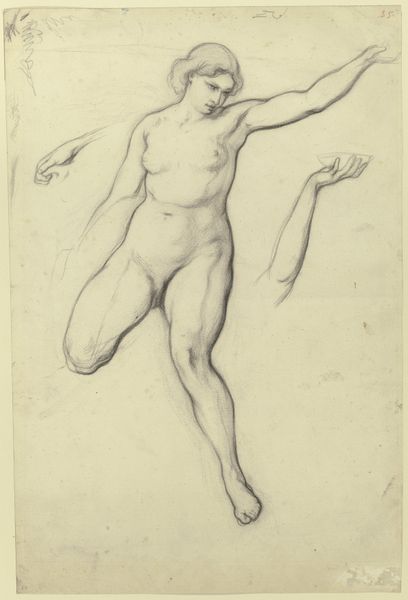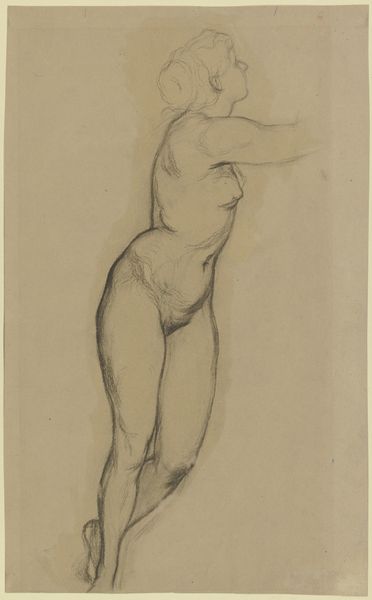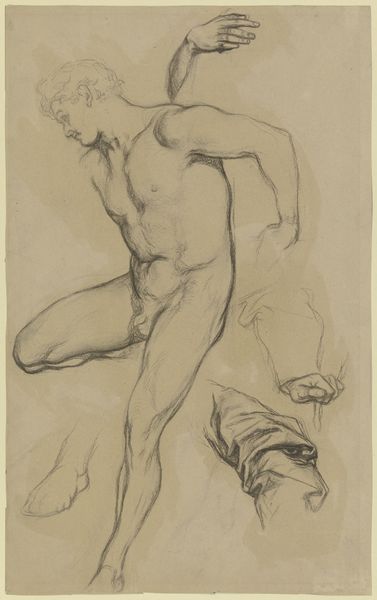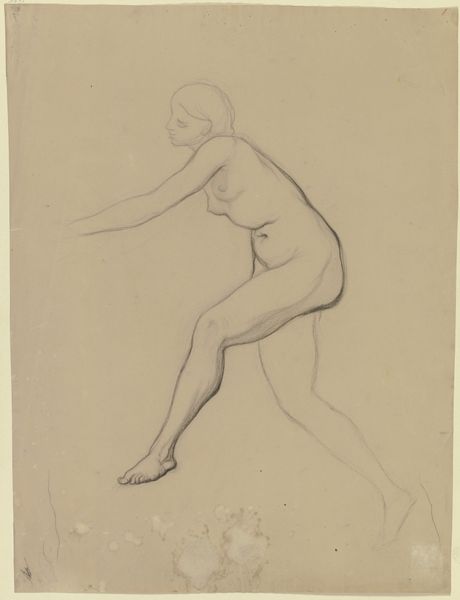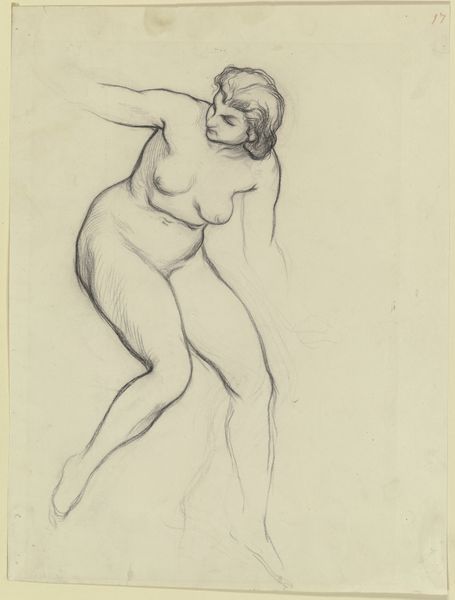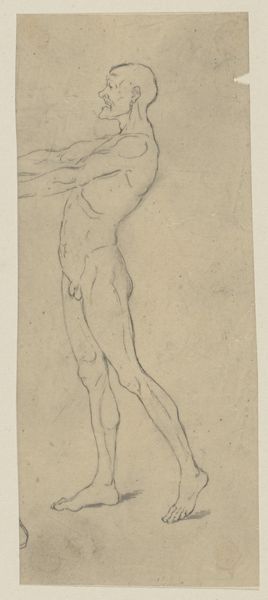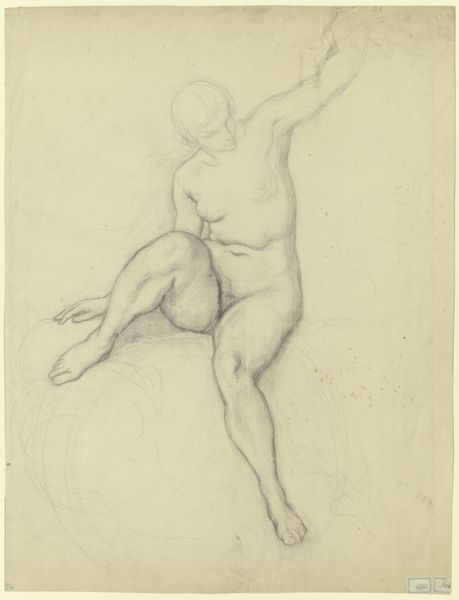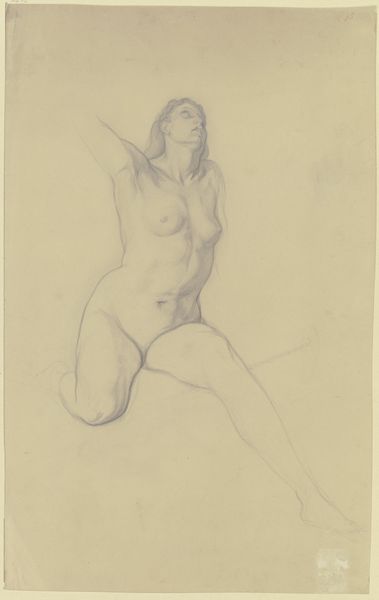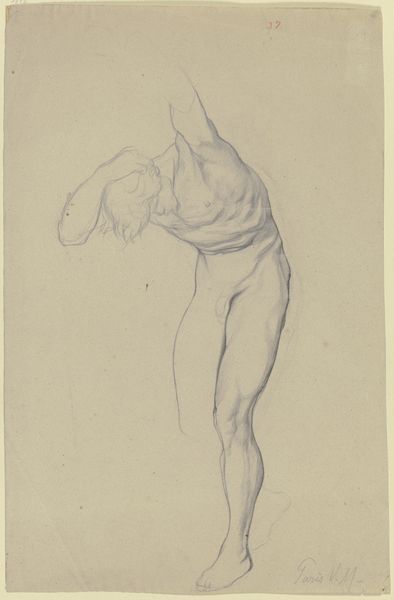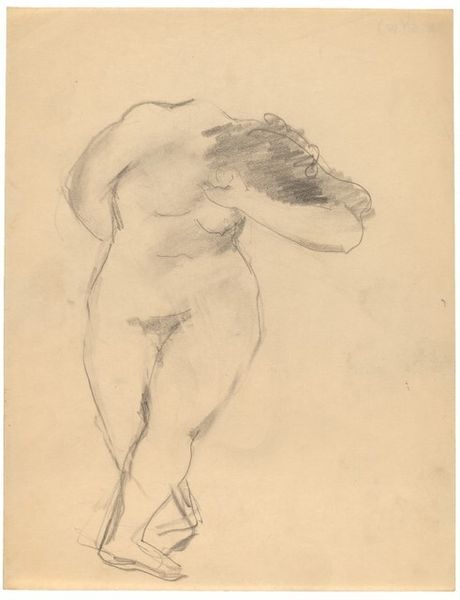
Weiblicher Akt in Vorderansicht, in starker Beugung nach hinten, die Arme erhoben
0:00
0:00
drawing, paper, pencil, chalk
#
drawing
#
16_19th-century
#
pencil sketch
#
figuration
#
paper
#
form
#
personal sketchbook
#
pencil drawing
#
pencil
#
chalk
#
academic-art
#
nude
Copyright: Public Domain
Editor: So, this is Victor Müller's "Female Nude, Front View, in Strong Backward Bend, Arms Raised," a drawing made with pencil and chalk on paper sometime in the 19th century. It’s located at the Städel Museum. The pose is quite dynamic, almost unsettling, really. What do you see in this piece? Curator: I'm struck by the sheer emotional charge held within the human figure. Note how the raised arms and arched back aren't just anatomical; they’re symbolic. There’s a sense of surrender, perhaps, or even defiance. What does this gesture, so exposed, recall for you? Editor: I see the defiance, a challenge. The backward bend seems almost painful. But surrender? I'm not sure I get that. Curator: Consider the historical context. The female nude was often depicted passively, as an object of beauty. But here, there’s agency, wouldn't you agree? This pose breaks with the canon. Editor: So, this isn’t just a study of form; it's commenting on representation? Curator: Precisely. And Müller is playing with potent symbols, loaded images from our visual past. The upraised arms, for instance, evoke a multitude of associations, from religious ecstasy to bodily trauma. This echoes centuries of depictions of suffering, sacrifice, but inverted with agency. It raises questions about control, vulnerability. It makes us rethink classical presentations of women in art. Does this complicate your reading? Editor: Definitely. I didn't initially connect it to those deeper iconographic traditions. It changes how I understand the emotional weight of the piece. It's powerful to consider. Curator: Indeed. By unpacking these visual cues, we gain a richer appreciation of the artwork's intent and its enduring resonance within cultural memory. Editor: I never would have thought to analyze the posture this way, to read so much into it. Thank you!
Comments
No comments
Be the first to comment and join the conversation on the ultimate creative platform.
